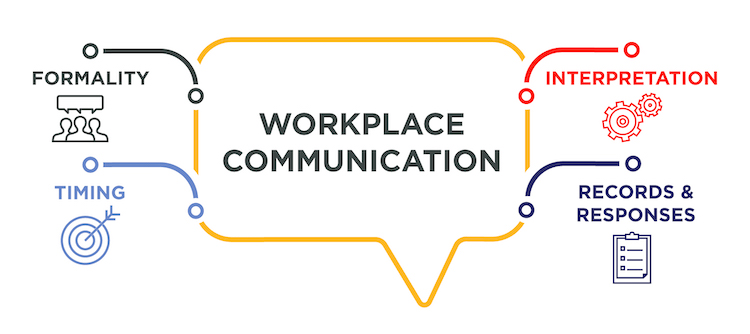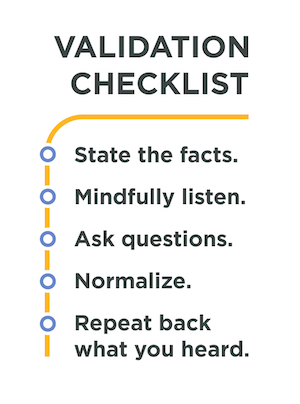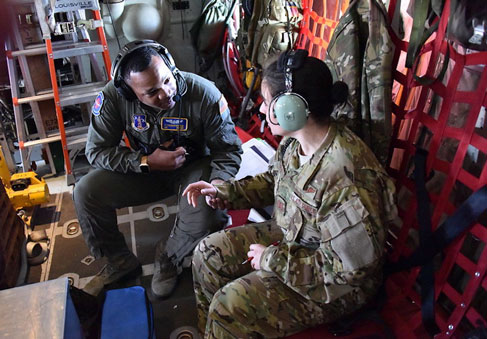Healthy team relationships are an important part of being able to get the job done. Those relationships also have a major impact on how happy you are in your service, how motivated you are in your role, and even how well you’re able to do what you need to do. The truth is that many people spend most of their waking hours at work. That’s doubly true for Service Members who often eat, sleep, and live with their teammates for days, weeks, or months at a time. If you focus on optimizing your relationships with your team, you’ll be able to better perform as an individual and as a unit.
How do professional relationships impact performance?
Your relationships matter. They matter for your well-being and for the mission. Think again about how much time you spend with your teammates, commanding officers, and others while at work. With good relationships, trusted battle buddies can spend those hours working towards a common goal. But if your relationships aren’t quite as strong, those hours can be isolating, frustrating, ineffective, and stressful.
For you, healthy relationships with your unit members can mean support, trust, and friendships. High levels of trust also mean improved cohesion, higher morale, and greater achievement. Meanwhile, disrespect and rudeness (either intentional or unintentional) are linked to depression and anxiety—and the effects can last for years (even after you leave that work environment). Negativity in your relationships at work are also a chronic stressor, and that stress has been shown to spill over into relationships at home, increasing conflict. And if you’re married, stress can reduce overall marital satisfaction as well.
Beyond your personal well-being, your team relationships impact overall effectiveness too. Negative relationships among co-workers lead to diminished morale, reduced productivity, more burnout, and higher turnover—all of which are serious consequences for the military as a whole. It can also get in the way of communicating effectively, an important aspect of mission success. On the flip side, teammates who trust each other and can communicate well are able to get their primary tasks done more efficiently. Effective communication also helps you to coordinate plans, inform leaders, instruct other Warfighters, seek information from others in your unit, and share details—especially across diverse teams in various settings.
Communication improves relationships and performance
At the core, healthy relationships grow out of good communication. That goes for personal relationships and professional ones. Within the military, good communication means solid working relationships that help everyone get the information they need to do their jobs. Open communication channels between leaders or commanding officers and unit members also help build trust, cohesion, and engagement.
Ways to boost workplace communication
-
 Consider how, when, or where it makes sense to get in touch.
Consider how, when, or where it makes sense to get in touch.
- Formality. Is this a serious conversation you need to schedule? Can you cover it during your regular briefing meetings? Or is this something you can just pop over and discuss, send a text, or talk about the next time you cross paths in the dining facility, on base, or other informal locations? If your message is more serious (for example, about performance or private matters), you might consider taking a more formal, in-person approach rather than handling it through casual chat, text, or email.
- Timing. Do you need to have a full discussion with lots of back-and-forth? Or are you simply sharing basic information for situational awareness? If you need a response, how quickly do you need it? If you’re hoping to have a two-way conversation, it might be more efficient to chat over the phone or in person. With email, text, chat, or other forms of electronic communication, you might not always get a response in real time, so having a lot of back-and-forth could become slow or frustrating. And if you’re in a rush or under a time crunch, electronic means might not be the most effective.
- Interpretation. Do you need to talk about something complicated or confusing? Will there be questions? Can what you have to say be misinterpreted? When you speak with someone in person, you’re not only communicating with words, but with tone, body language, and facial expressions to help convey an idea or information. And all of those elements help the other person understand you. But with email or written forms of communication, you can potentially lose a lot of meaning in your message, so think carefully about how you share it.
- Records & responses. How thoughtful do you need or expect responses to be? Is it important to have a “paper trail” to come back to? When it comes to getting things done at work and on duty, it can be valuable to have a record of conversations. For example, if you divvy up certain tasks or set target dates, try to write things down in an action plan or email, so your team can refer back to it as needed. And if you want your teammates to have a chance to think carefully before they respond, choose a delayed form of communication to give your team a chance to absorb information, organize their thoughts, and give feedback.
- Speak and listen with respect.
Assertive communication is a way of speaking (or writing) so that you’re clear and firm about your needs, but also respectful of your team, unit members, and the mission. Without strong, assertive communication skills, you might end up not being heard (leading to resentment and disengagement on the job) or communicating too harshly (causing conflict within your team). In a military environment, you might not always have the chance to speak up, but if you’re truly struggling or concerned that you’ll be unable to perform at your best, addressing the issue directly is a best practice.
Communicating isn’t just about talking—it’s also about listening. Being a good listener at work is an important aspect of cooperation and problem-solving too. Active listening is about staying focused and present, so you can truly absorb what you’re hearing. It’s also a skill that conveys respect to the person you’re engaging with. It can be easy to get distracted during conversations or meetings (by looking at your phone, for example), but active listening shows the other person you’re singularly focused on what they’re saying. Simple tips to be a good listener include maintaining eye contact, repeating back what you heard, and asking follow-up questions.
- React and respond to build relationships.
 Sometimes you can get away with a quick chat on duty. But more often than not, when it comes to the important stuff, bigger conversations are needed. And that brings more opportunities to use your communication skills to build relationships on your team. The fact is that how you respond to your teammates (or anyone really)—especially in times of stress, conflict, or even excitement—can build up or break down your relationship.
Sometimes you can get away with a quick chat on duty. But more often than not, when it comes to the important stuff, bigger conversations are needed. And that brings more opportunities to use your communication skills to build relationships on your team. The fact is that how you respond to your teammates (or anyone really)—especially in times of stress, conflict, or even excitement—can build up or break down your relationship.
In moments of stress, or if your conversations are starting to get heated, practice validation. It’s important to acknowledge and honor your teammates’ experience, even if your ideas or perspectives are different. When you’re able to validate another person’s experience, your relationship will grow stronger, and you’ll move closer to finding common ground, which can be important on the job.
Meanwhile, when your battle buddy passes their fitness test, sheds some extra weight, or gets that PCS assignment they’ve been hoping for, show your enthusiasm. It can be easy to look for problems or simply get distracted before you get a chance to really celebrate, but it’s important to take a minute and honor their good news. It’s a simple way to build your relationships in the future.
